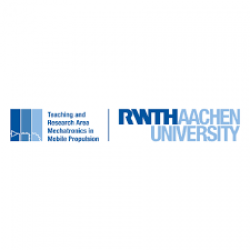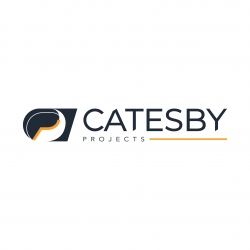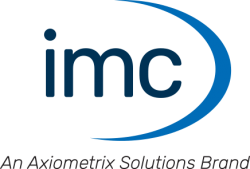FREE-TO-ATTEND TECHNOLOGY PRESENTATION STAGE
Hall 8 Tuesday, June 4, Hall 8 - morning session
10:00
Upgrading your hardware-in-the-loop testing infrastructure: enhancing future mobility
 Dr Sung-Yong Lee
Dr Sung-Yong LeeChief engineer, teaching and research area mechatronics in mobile propulsion(MMP)
RWTH Aachen
Germany
This presentation delves into the significance of hardware-in-the-loop (HIL) within the context of advancing future mobility. It explores the pivotal role of HIL in validating and optimizing complex systems, highlighting its importance in accelerating innovation and ensuring the reliability of emerging technologies. Addressing the challenges inherent in HIL testing, the presentation discusses elements for building a flexible testing infrastructure tailored to the demands of evolving mobility solutions by combining physical and virtual testing. Upgrading HIL capabilities paves the way for more efficient development processes, safer transportation systems and ultimately, a more sustainable and interconnected future of mobility.
What the audience will learn
- The importance of hardware-in-the-loop testing for future mobility
- Challenges associated with HIL testing and strategies to overcome them
- Advanced HIL testing infrastructure tailored to the demands of tomorrow's evolving R&D
- How upgrading HIL capabilities can lead to more efficient development processes without extensive resources
- R&D strategy proposal: empowering industrial advancements in testing through the open infrastruture of the university
10:20
Battery production test – from cell to module and pack
 Manuel Hofmann
Manuel HofmannChief solution marketer, battery test
NI (Test and Measurement at Emerson)
Germany
In today's fast-paced battery production landscape, where ambitious goals for scalability and data ownership are at the forefront, understanding the critical role of testing and data analytics is paramount. Discover the challenges faced in achieving ambitious battery pack and module production goals and how to overcome them. Learn how to harness the power of the NI platform's capabilities and gain a competitive advantage through a total cost of ownership perspective. Explore the transformative potential of data analytics in optimizing production, reducing costs and mitigating risks.
What the audience will learn
- Key challenges and industry trends for battery cell, module and pack production
- Assembly quality assurance through electrical verification test techniques
- Insights to leverage data analytics for battery production
10:40
High-speed volumetric capture and CAE comparison
 Koji Sasaki
Koji SasakiAssistant manager
Photron Ltd
Japan
In recent years, airbags have become more varied and diverse, and development speed is required. In CAE development, it is difficult to reconcile this with experimental data, and it has not been possible to contribute to development speed. The presentation concerns a comparative study with CAE performed using Photron's high-speed volumetric capture.
What the audience will learn
- Comparative validation of CAE data and experimental data in airbag development
- Overview of high-speed volumetric capture that can generate 3D models in time series
- Overview of TimeSpaceView, software that enables comparison and differencing between the resulting 3D model and CAE results
11:00
Fatigue damage estimation using an engineering/data science approach
 Thomas Kemmerich
Thomas KemmerichTechnical software expert
HBK – Hottinger, Brüel & Kjær GmbH
Germany
Monitoring damage and its potential causes in lab-tested structures requires extensive instrumentation that cannot be feasibly replicated in production assets. Since strain gauge instrumentation at a large scale is impractical, other proxy measurements for damage are needed. The presentation proposes a general framework for exploring data which is inspired from the field of data science. Using a combination of engineering calculation packages and open-source data science tools, it shows how engineers can further their understanding of the problem domain. A case study shows how a minimal instrumentation subset can be identified for the purpose of damage approximation.
What the audience will learn
- Using machine learning algorithms for fatigue damage predictions
- A mixed engineering/data science approach
- Complex signal processing of sensor data to clean data and extract relevant features
11:20
Catesby Tunnel: taking real-world testing repeatability to new levels
 Dr Jon Paton
Dr Jon PatonManaging director
Catesby Projects
UK
The first few minutes of this presentation will introduce the audience to Catesby Tunnel, with a brief overview of its history and transformation from a Victorian railway tunnel to a full-scale vehicle testing facility. The presentation will then consider and explore other testing options available, including wind tunnels, outdoor proving grounds and CFD, before outlining why Catesby Tunnel is different and how it offers real-world and incredibly repeatable conditions. We will then explore the types of full-scale vehicle tests that Catesby Tunnel can accommodate, including VCA-approved WLTP coastdown tests.
What the audience will learn
- The benefits of conducting full-scale vehicle tests at Catesby Tunnel
- Some insight into best practices for conducting coastdown tests
- How repeatability is the key to efficient and cost-effective testing
11:40
Insights into the next generation of powertrain testing at AMG
 Jan Georges
Jan GeorgesSenior engineer, test and validation
tracetronic GmbH
Germany
 Moritz Sauren
Moritz SaurenSoftware developer
Mercedes-AMG GmbH
Germany
Test teams need to increase their expertise in more diverse domains (e.g. cloud administration, vECU development, SIL tooling), but also maintain existing test environments. Developing the next generation of ECUs requires a complex interaction of different roles and expertise. The presentation showcases Mercedes-AMG's modern setup of tools and methods for next-generation powertrains to achieve simple and fast feedback for in-house development. Automated execution and environment-independent test descriptions are crucial components for success. This reduces the complexity of test case creation significantly and increases the degree of reusability. Results are easily accessible, from SIL to HIL to VIL.
What the audience will learn
- Developing the next generation of ECUs is a complex interaction of different roles and requirements
- Every day, new features and software artifacts are continuously tested and validated in agile software development
- The latest technologies are used to test as quickly as possible while minimizing the use of resources
- A testing platform is created from SIL to HIL to VIL
- Direct feedback on software quality is always available for management and development
12:00
An advanced E/E integration solution for e-drive systems
 Dr Gerald Sammer
Dr Gerald SammerPrincipal business development manager
AVL
Austria
This presentation dives into the details of an advanced testing solution for E/E integration with a focus on e-drive systems. The proposed system provides efficiency gains in the E/E integration process by utilizing a fully integrated functional testing workflow and toolchain.
What the audience will learn
- Challenges of today's E/E integration process
- Technical setup of an advanced E/E integration test system
- Benefits of this approach
12:20
Sensor systems in testing automotive driving dynamics
 Florian Sailer
Florian SailerApplication specialist wheel force transducer and telemetry
imc Test and Measurement GmbH – an Axiometrix Solutions brand
Germany
The evolution of modern vehicle drive concepts provides new opportunities. However, it also presents challenges, particularly in the realm of precise vehicle dynamics assessment. This lecture delves deeply into the world of measurement technology and provides knowledge to conquer these challenges. With the complexity and speed that innovations like torque vectoring bring, new and demanding requirements for measurement technology emerge. Learn about imc’s steering effort sensor, measuring wheels for torques and forces, and slip-free optical speed measurement – used in combination or standalone for a wide variety of measuring tasks, especially for the development of EVs without EMC issues in prototypes.
What the audience will learn
- Measurement of drive and output torques including braking torques directly at the wheel
- Precise wireless measurements with wheel force and wheel torque transducers even in bad weather conditions
- Measuring steering torque, angle, steering velocity and acceleration in x, y and z directions with the original steering wheel
- The advantages of slip-free optical speed measurement
Hall 10 Tuesday, June 4, Hall 10 - morning session
10:00
Durability engineering 2.0: how Alpine utilized Compredict's virtual sensor platform
 Dr Daniel Dilmetz
Dr Daniel DilmetzHead of platform sales and partnerships
Compredict GmbH
Germany
 Stefan Hassels
Stefan HasselsHead of product
Compredict
Germany
Compredict is a leading expert in developing virtual sensors designed to supplant traditional hardware sensors. These innovative virtual sensors not only substitute for physical counterparts but also unlock enhanced functionalities in vehicles, accurately forecasting the lifespan of wear components like tires and brakes. Leveraging existing vehicle data exclusively, Compredict's cutting-edge development, the virtual sensor platform, is tailored for vehicle development. This platform empowers engineers to independently train virtual sensors utilizing vehicle data. In a compelling use case, Compredict demonstrates the application of this groundbreaking platform through a collaboration with the renowned sports car manufacturer Alpine.
What the audience will learn
- How the Compredict virtual sensor platform can be used to calibrate virtual sensors with existing measurement data
- How virtual sensors can be calibrated in the virtual sensor platform, even without prior knowledge of machine learning
- How durability engineering can be fastened and designed in a cost-efficient way
- How virtual sensors can help to reduce the risk of costly recalls and warranty claims, due to virtual sensor-backed vehicle testing
- How wheel force transducers can be virtualized
10:20
Innovative sensor telemetry solutions for automotive challenges
 Dr Julia Manner
Dr Julia MannerDirector
Manner Sensortelemetrie GmbH
Germany
Manner Sensortelemetrie's presentation unveils advanced automotive solutions for demanding conditions. Addressing challenges such as vibrations, oil, EMC and temperatures up to 200°C, the focus is on high-stress automotive applications. Highlighting the new generation of accurate, maintenance-free sensor telemetry, the presentation emphasizes its versatility in capturing diverse sensor signals crucial for automotive challenges. Introducing the latest developments, including flexible interface evaluation units (CAN, EtherCAT, ethernet and analog outputs), the presentation showcases a miniaturized unit with LED indicators. New software simplifies system monitoring and parameterization, creating a comprehensive monitoring system with smartphone app accessibility for enhanced user ease.
What the audience will learn
- Advanced solutions: Manner Sensortelemetrie unveils cutting-edge automotive solutions designed for challenging conditions, addressing vibrations, oil, EMC and high temperatures
- Versatility in signal capture: the presentation highlights the new generation of maintenance-free sensor telemetry, emphasizing its adaptability
- Latest developments including evaluation units with flexible interfaces (CAN, EtherCAT, ethernet, analog outputs) for adaptable and robust automotive applications
- The presentation highlights a miniaturized evaluation unit with three LED indicators, ensuring seamless monitoring and troubleshooting in automotive settings
- New software for automotive system monitoring, parameterization and creating a comprehensive monitoring system by defining threshold values
10:40
Simcenter Testlab RT for XIL test rigs and simulators
 Ludo Gielen
Ludo GielenSenior director innovation and incubation testing solutions and smart vehicle technologies
Siemens Simulation & Test Solutions
Belgium
The use of an XIL approach speeds up subsystem functional performance validation in any prototype stage. Simcenter Testlab RT enables productive testing of physical systems 'in-the-loop' on test rigs and simulators using executable digital twins. It provides a scalable software and hardware environment in which a physical component or system under test and the test bench connect to virtual representations of multiple operating environments. Using Simcenter Testlab RT, various test configurations are then configured and executed in hard real time. Such an XIL approach shifts the physical prototype component test program earlier in the development cycle.
What the audience will learn
- How to speed up subsystem functional performance testing and validation in a lab environment
- Faster turnaround and more effective testing on XIL test rigs with Simcenter Testlab RT
- Intuitive definition of real-time co-simulation configurations involving multiple simulation tools, connected to the physical test environment
- The value of synchronized physical and virtual sensors during XIL testing
11:00
Smart charging – from conformity to interoperability
 Dr Raphael Pfeil
Dr Raphael PfeilSenior product manager
Vector Informatik GmbH
Germany
To ensure customer satisfaction and the success of electromobility, a reliable charging process is crucial. This can be achieved by ensuring that implementations and products comply with known standards and are interoperable with each other. The increasing number of new standards, such as ISO 15118-20, and new EV and EVSE manufacturers on the market, are adding complexity and effort to ensure conformity and interoperability. This presentation will showcase solutions for efficient verification from software-in-the-loop to hardware-in-the-loop levels, focusing on conformity and interoperability.
What the audience will learn
- State of the art in conformity and interoperability testing for electric vehicles and charging stations
- Challenges of conformity and interoperability testing for electric vehicles and charging stations
- Approach for reducing efforts and costs for interoperability testing
11:20
Localization and mapping validation services for highly automated driving vehicles
 Gregory Schroeder
Gregory SchroederSoftware engineer
IAV
Germany
Ensuring the precision of both localization and mapping accuracy is crucial for the safety and reliability of highly automated driving vehicles. This presentation dives deep into the challenges and methodologies and IAV's proposed solutions for validating localization and mapping accuracy in dynamic environments. Through highlighted real-world applications, the audience will receive insights into utilizing cloud-based services.
What the audience will learn
- Insights into localization and mapping validation services for highly automated driving vehicles
- The proposed approach to overcome validation hurdles and enhance localization and mapping accuracy
- The relevance and functionality of IAV's cloud-based services,which contribute to enhanced safety and reliability
11:40
Cloud-based testing for HIL and SIL
 Hartmut Jürgens
Hartmut JürgensProduct manager
dSpace GmbH
Germany
Validation on the system level does not stop at domain borders, especially in the case of HPCs that cover multiple function domains. Testing by function developers and verification and validation by test teams is often done in specific test environments, tailored to the function domain. Collaboration of all participating team members and considering all the test results is therefore challenging. Get inspired by dSpace Simphera’s web-based front ends that are tailored to multiple function domains. Benefit from options for cloud-based scalable SIL executions or HIL executions on registered resources for seamless validation in your team.
What the audience will learn
- Benefits of web-based front ends for testing
- Ease of worldwide collaboration based on cloud technology
- Introduction to Simphera as an open testing platform for multiple domains
12:00
Challenges in cybersecurity testing for future mobility solutions
 Jorge Wallace Ruiz
Jorge Wallace RuizCybersecurity technical leader
DEKRA
Spain
The presentation will explore challenges in security testing for future mobility solutions, highlighting the intricacies of embedded software in cars, and how this impacts the way to test the security capabilities. We'll have an overview of the significance of security architectures, protocols and the implementation of a secure software development lifecycle. Additionally, the presentation will cover standards and regulations for automotive components, emphasizing the role of testing, vulnerability assessment, fuzz and penetration testing in ensuring security. Finally, it will explore the composition as a potential solution to simplify the process of testing cybersecurity capabilities.
What the audience will learn
- Challenges and boundaries in automotive cybersecurity testing
- How to use the verification and validation techniques to solve cybersecurity issues
- Benefits of using composition in the certification strategy
12:20
New approach to hardware-in-the-loop automotive chassis simulation system
 Colin Gong
Colin GongTechnical support operations manager
Shanghai Tosun Technology Ltd
China
A new implementation method for a hardware-in-the-loop simulation system is introduced for automotive electronic chassis testing, which utilizes the automotive electronics toolchain TSMaster. With TSMaster's extensive hardware support capabilities, all kinds of test instruments and devices on the market can be integrated into the TSMaster software platform. With TSMaster's applets and toolboxes architecture, automotive dynamics engines like CarSim can be integrated into the testing environment.
What the audience will learn
- How to implement soft real-time simulation step by step
- How to build a soft real-time simulation system
- How to automatically configure vehicle models
- How to execute tests using graphical programming language
- How to develop your own testing toolboxes
12:40
MISRA C in an ISO 262626 context
 Andrew Banks
Andrew BanksTechnical specialist
LDRA
UK
Since its inception, MISRA C has been inextricably linked to automotive functional safety requirements. This was enshrined within ISO 26262, with MISRA C being a recommended approach – a relationship that has been renewed with the second edition and that will remain with the forthcoming third edition. In this presentation, Andrew Banks (the MISRA C Working Group chairman) will discuss the relationship between MISRA C and ISO 26262 (particularly within Part 6, Software), and outline how MISRA compliance can help in achieving certification.
13:00
Four ways AI can reduce engineering time and cost
 Dr Richard Ahlfeld
Dr Richard AhlfeldCEO and founder
Monolith AI
UK
AI is changing the testing and validation landscape. With the use of predictive analytics, domain experts can make better data-driven decisions to avoid product launch delays, improve product quality, reduce costs, and ultimately accelerate time-to-market. In his talk, Dr. Richard Ahlfeld, CEO and founder of Monolith, will address four key areas where AI is having a significant impact on product development, namely test data validation, test campaign optimisation, root-cause analysis and system calibration.
What the audience will learn
- Use test data to build self-learning models to quickly understand intractable physics problems
- Use AI to automatically detect faulty measurement data to avoid wasted tests
- Use AI to predict product performance and recommend the critical tests to run
- Determine root cause failure to make better decisions, faster
